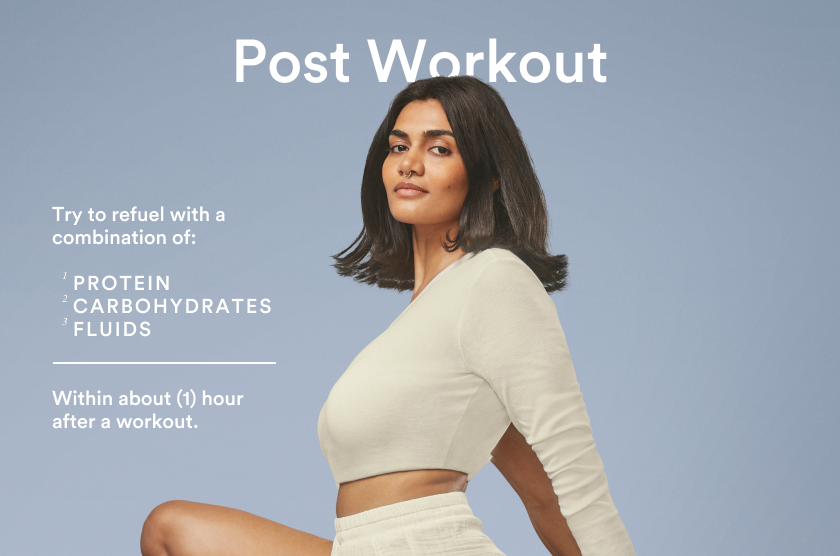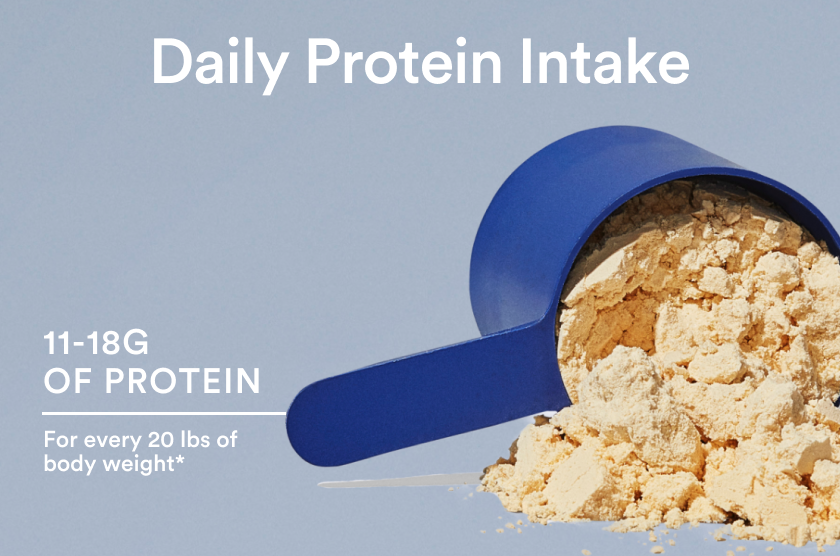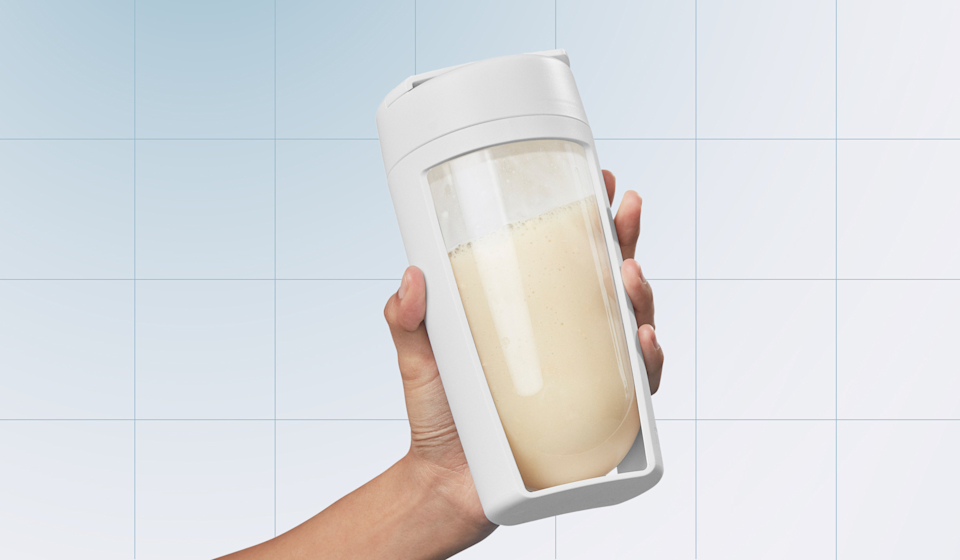Protein before or after a workout: What the science says
When it comes to protein consumption, the literature is clear. Twenty to thirty grams of high-quality protein after exercise—with an overall protein intake of 1.2 to 2.0 g/kg per day—is key for supporting muscle growth in response to strength training, as the body continues synthesizing protein for at least 24 hours after even a single (!) resistance exercise session. (4)
Even more intriguing? Research shows increased sensitivity to dietary protein intake during this timeframe, too. “This would suggest that drinking a protein shake (or eating a protein-containing meal) after workouts would be good timing for athletes—along with multiple protein-containing meals throughout the day to meet overall needs,” says Addy.* (4)

How to build a balanced smoothie, according to a nutritionist
Wherever you lie on the dietary spectrum—whether you’re an omnivore, vegan, flexitarian, or anywhere in between—the trick to ensuring your smoothie is truly nutritious is to make sure it contains key macronutrients in appropriate serving sizes.
We’ve got you covered with a customizable smoothie blueprint (courtesy of our resident dietitian and VP of Scientific Affairs, Dr. Mastaneh Sharafi, PhD, RD), along with three of our favorite recipes. Short on time? Here’s the (quick) scoop.
- 1 serving of Essential Protein (or another vanilla-flavored protein powder). Regardless of the brand, you’ll want to ask a few key questions to ensure the smoothie includes a high-quality protein supplement. (FWIW, this is true for any type of protein source, whether it’s pea protein, casein protein, whey protein, or anything else.)
- 1 cup fiber-rich carbs, like frozen berries or bananas. In addition to being an important source of energy to fuel your workout and replenish post-workout, fiber-filled carbohydrates offer a multitude of benefits, from digestive support and regularity to satiety.*
- 1 cup cold liquid. Water, juice, plant-based milk, cow’s milk… Sure, it’s great for staying hydrated, but it’s also functional: You need some fluids to put the smooth in your smoothie. That’s not to mention it’s a chance to consume additional nutrients—like potassium, if you opt for coconut water.
- 2 tbsp healthy fats. Nut butter, frozen avocado, and chia seeds are our go-tos, but as a general rule, adding omega-3 fatty acids to the diet is a great way to support brain, heart, and eye health. It’s also why we include vegan omega-3 DHA (sourced from microalgae!) in our multivitamins.*
- A few cubes of ice if you like a creamier texture. Totally optional.
→ Essential reading: Plant-Based Protein Powder: What to Look for (and Avoid)
Bottom line?
Protein is important for post-workout muscle support, and many people turn to protein shakes to help meet their total protein intake for the day. For good reason, too: They’re an easy, convenient way to up your nutrient game—particularly if you prioritize finding a good-tasting protein powder.*
Ultimately, research suggests that protein intake timing varies based on activity performed and individual fitness goals. But for most people on the journey to support muscle-building, consuming protein after a sweat session—which includes drinking post-workout protein shakes—is a good idea.*
An equally important factor, though? Consuming enough protein in the first place.
Speaking of protein needs… Here’s 7 complete protein food combos and 8 high-protein breakfast ideas to try out.
References:
- National Academies of Medicine. Dietary Reference Intakes for Energy, Carbohydrate, Fiber, Fat, Fatty Acids, Cholesterol, Protein, and Amino Acids (Macronutrients). 2005.
- Phillips SM. Current Concepts and Unresolved Questions in Dietary Protein Requirements and Supplements in Adults. Front Nutr. 2017 May 8;4:13.
- Office of Dietary Supplements. Dietary Supplements for Exercise and Athletic Performance. Fact sheet for health professionals. 2019.
- Thomas DT, Erdman KA, Burke LM. Position of the Academy of Nutrition and Dietetics, Dietitians of Canada, and the American College of Sports Medicine: Nutrition and Athletic Performance. J Acad Nutr Diet. 2016;116(3):501-528.
- Aragon, A. A., & Schoenfeld, B. J. (2013). Nutrient timing revisited: is there a post-exercise anabolic window?. Journal of the International Society of Sports Nutrition, 10(1), 5.
- Gollnick, P. D., & Matoba, H. (1984). Role of carbohydrate in exercise. Clinics in sports medicine, 3(3), 583–593.














